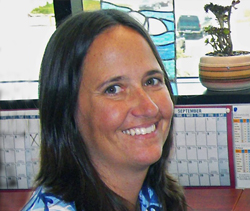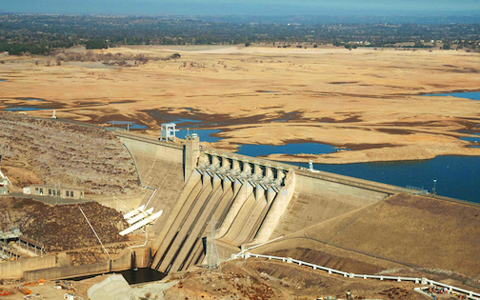No registration is required for the short course. All interested researchers and students are invited to attend. Seating is limited and is available on a first come, first served basis.

Alex Hall
Speaker's Profile
Conjunctive Use of Water in the Central Valley: Past, Present, and Future
Claudia Faunt
Hydrologist
USGS California Water Science Center
Speaker's Profile Abstract:
The Central Valley is one of the most productive agricultural regions in California. Because the valley is semi-arid and the availability of surface water varies substantially from year to year and season to season, the agricultural industry developed a reliance on local groundwater for irrigation. Groundwater pumpage has caused severe groundwater-level declines in portions of the valley, resulting in land subsidence. The completion of state and federal water distribution systems by the early 1970s eased the reliance on local groundwater as dependence shifted to diverted surface water. As a result, groundwater levels recovered and subsidence virtually ceased. In the last 20 years, however, land-use changes and an assortment of limitations to surface-water availability—including droughts and environmental flows—have resulted in increased pumping and renewed land subsidence. The spatially variable subsidence has changed the land-surface slope in some places and caused changes to drainage and infrastructure, including surface-water delivery canals. Planning for the effects of subsidence is important for water managers. As land use and surface-water availability continue to vary, long-term groundwater-level and subsidence monitoring, analysis, and modeling are critical to understanding the dynamics of historical and continued groundwater use resulting in groundwater-storage changes and associated subsidence. Modeling tools, such as the USGS Central Valley Hydrologic Model, can be used in the evaluation of management strategies to mitigate adverse impacts due to subsidence while also optimizing water availability. This knowledge will be critical for successful implementation of recent legislation aimed toward sustainable groundwater use.

CA Water Infrastructure
John Hall
Professor of Civil Engineering
Department of Engineering and Applied Science
California Institute of Technology
Speaker's Profile

Common-Pool Resources: Over Extraction and Allocation Mechanisms
James Walker
Professor of Economics
Indiana University, Bloomington
Speaker's Profile
Abstract:
Fundamental to the study of economics are the concepts of scarcity and opportunity costs as applied to the production and consumption of goods and services. Scarcity implies the need for allocation among competing uses of resources, while opportunity costs imply that every use comes with a cost. Water is one of the most fundamental of such resources.
This short course will focus on the conceptual issues related to the allocation of water in resource settings that parallel those of Common-Pool Resources (CPRs) – settings where property rights over units of extraction are not well defined, the units being extracted are rival in consumption, and extraction generally causes external costs (externalities) on others.
The discussion will be organized around three primary themes:
- over-extraction of CPRs as related to production externalities and rent dissipation, as well as the potential for deterministic and probabilistic degradation of the ecological system in which the water system is imbedded;
- based on the work of Elinor Ostrom, self-governing design principles as guidelines for designing resource allocation mechanisms among competing users;
- the feasibility of the assignment of effective property rights that allow for market mechanisms as a possible solution to over extraction and ecological degradation.


